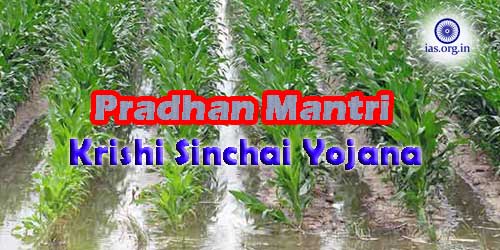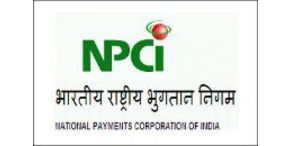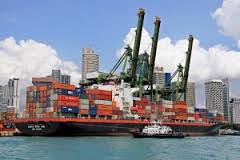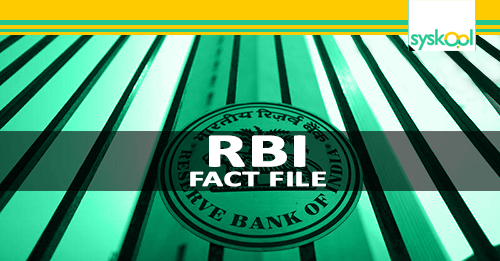Committed to give high priority to water conservation and its management, the Government of India has formulated Pradhan Mantri Krishi Sinchai Yojana with a vision of expanding the coverage of irrigation ‘Har Khet Ko Pani’ and improving the efficiency in use of water ‘More Crop Per Drop’ in a concentrated manner with end to end solution on source creation, management, distribution, field application and expansion activities.
Objectives of Pradhan Mantri Krishi Sinchai Yojana (PMKSY)
To encourage expansion activities linked to water harvesting, water management and crop alignment for farmers and grass roof level field functionaries; to attract greater private investments in irrigation that, in turn would enhance agricultural production and productivity and increase far income; to attain convergence of investments in irrigation at the field level.
One of the main objectives of the Pradhan Mantri Krishi Sinchai Yojana is to make sure the integrated development of rainfed areas by using the watershed approach towards soil and water conservation, regeneration of ground water, limiting runoff, catering livelihood options and other NRM activities.
The increase the physical access of water on the farm and extend cultivable area under assured irrigation that has been named ‘Har Khet Ko Pani’ is a prime objective of the Yojana. Along with this the Yojana has also the objective of increasing the appropriation of precision irrigation and other water saving technologies that has been phrased ‘More Crop Per Drop’.
Other important objectives of the Pradhan Mantri Krishi Sinchai Yojana include irrigation of water source, distribution, and improve on-farm water use efficiency to decrease wastage and increase availability both in extent and duration; introduction of sustainable water conservation practices; exploration of the feasibility of reusing treated municipal waste water; and enhancement of recharging of aquifers.
Must Read: Pradhan Mantri MUDRA Yojna (PMMY)
Strategy and Areas of Concentration
In order to achieve the declared objectives, Pradhan Mantri Krishi Sinchai Yojana has announced that it will formulate strategies by concentrating on end-to-end solution in irrigation supply chain. This supply chain includes distribution network, water sources, efficient farm level application, extension services on new technologies and information, etc.
Pradhan Mantri Krishi Sinchai Yojana has been formulated by combining ongoing schemes such as Accelerated Irrigation Benefit Programme (AIBP) of the Ministry of Water Resources (MoWR)- Integrated Watershed Management Programme (IWMP) Department of Land Resources (DoLR); River Development and Ganga Rejuvenation (RD & GR) of the MoWR; and on Farm Water Management (OFWM) of Department of Agriculture and Cooperation (DAC).
Programme Components
Under this Yojana the aim is to create new water sources through Minor Irrigation of both surface and ground water.
The Yojana invisages repairing, restoration and renovation of water bodies; strengthing the carrying capacity of traditional water sources, Construction of rain harvesting structures (Jal Sanchay).
Under this Yojana comes command area development, empowering and creation of distribution network from source to the farm; improvement in water management-at least 10% of the command area to be covered under micro-precision irrigation.
Also Read: PRADHAN MANTRI JAN DHAN YOJNA
PMKSY (More Crop Per Drop)
Under this component of the Yojana come: Programme management, preparation of State/District Irrigation Plan, approval of annual action, Monitoring etc. capacity building, training and awareness campaign consist of low cost publications, use of pico-projectors.
Under this component the extension workers are going to be empowered to spread relevant technologies after getting requisite training in the area of promotion of scientific moisture conservation and agronomic measures; Information Communication Technology (ICT) interventions are to be used in the field of water-use efficiency.
PMKSY (Watershed Development)
This component of the Yojana aims to the effective management run off water and improved soil and moisture conservation activities such as ridge area treatment, drainage line treatment, rain water harvesting and other allied activities on watershed basis.
Don’t Miss: National Biotechnology Development Strategy (NBDS) (2015 – 2020)






 The drain theory, as formulated by the nationalists, referred to the process by which, a significant part of India’s national wealth, was being exported to England for which India got no economic returns. In other words, India was made to pay an indirect, tribute to the English nation.
The drain theory, as formulated by the nationalists, referred to the process by which, a significant part of India’s national wealth, was being exported to England for which India got no economic returns. In other words, India was made to pay an indirect, tribute to the English nation.